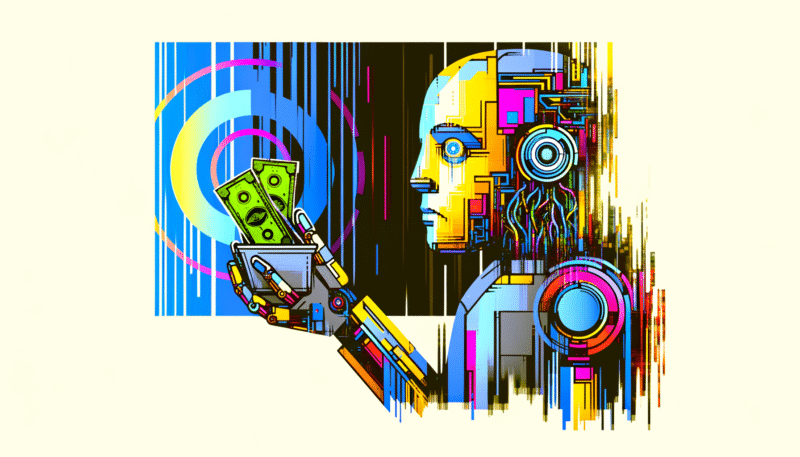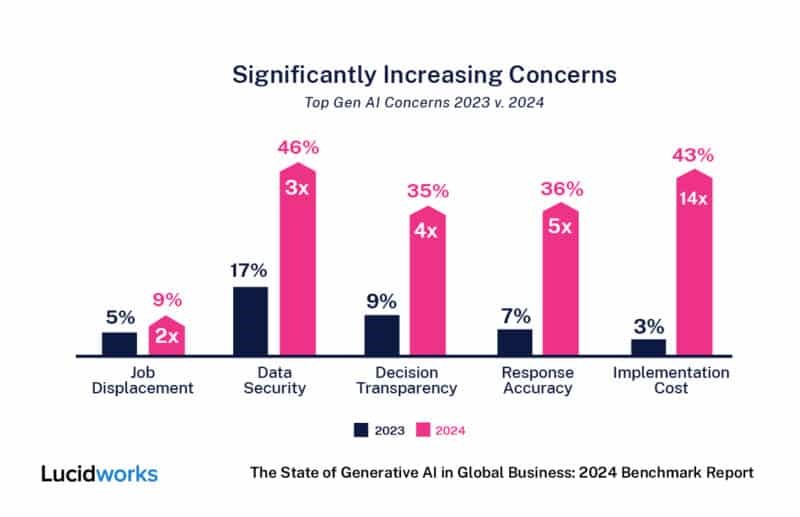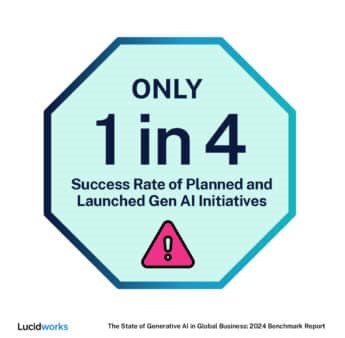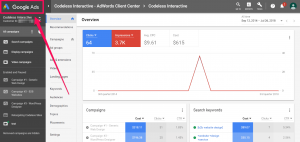The bloom is off the AI rose as companies dial back spending amid concerns over cost and implementation failures.

This week Apple announced it was (finally) going all in on AI, adding a suite of generative AI capabilities to all its operating systems. While not unexpected, Apple’s AI push is an interesting development for two reasons.
First, there are signs that some businesses are slowing AI investment because of the cost and a high rate of AI implementation failure. Second, Apple is pushing out AI for consumer use, something many consumers don’t seem to be interested in.
Let’s start with AI investment. Overall, businesses are still enthusiastic about the impact of AI on customer experience, automation and business operations, but reality is replacing hype. Nearly two-thirds (63%) of global companies plan to increase AI spending in the next 12 months, according to a new study from Lucidworks. While that’s a lot, last year it was 93%.
Not surprisingly, 36% of companies plan to keep spending flat this year, as opposed to only 6% in last year’s survey, according to Lucidworks 2024 State Of Generative AI In Global Business report (registration required).
AI costs are concerning
Last year only 3% of those surveyed were worried about implementation costs — last on the list of concerns. This year it’s in second place with 43%.

That makes sense, as AI is one of the most expensive technologies ever. Silicon Valley venture capital firm Sequoia calculated that in 2023 the industry spent $ 50 billion on chips alone! Which explains why it costs OpenAI $ 700,000 a day to run ChatGPT.
“We pay for it indirectly,” Krishna Tammana, CTO of conversational messaging platform Gupshup, told MarTech. “Now we don’t buy the chip directly, but for training some of our models and the fine-tuning we do, we get the most sophisticated machines from one of the cloud vendors to do the training and they’re very expensive. We use it for an hour a day, a week, a month — you pay a lot of money.”

It’s a big cost to bear even if an AI implementation works. However, only 25% of them do, according to Lucidworks. “The financial benefits of implemented projects have been dismal,” the report says. Some “42% of companies have yet to see a significant benefit from their generative AI initiatives.”
The tech sector has the most deployments and half have already realized financial benefits. Retail is a close second with the highest deployment of revenue and growth initiatives.
Using AI successfully
One company that’s had success with it is Tricolor, a Texas-based company that offers responsible, affordable, credit-building loans to Hispanic consumers with no or limited credit history. Chief Strategy Officer Mauricio Delgado said using AI with Tricolor’s deep base of data on its target audience pays off.
“Ultimately it comes down to what outcomes AI is allowing us to achieve,” he told MarTech. And among those outcomes is a reduction in customer acquisition costs. “We’ve seen customer acquisition costs drop dramatically for us. We’re below $ 150 per customer versus Carvana, that’s around $ 1000 per customer and CarMax is about $ 500.”
Chat, yes. Bots, no.
So far AI’s biggest business benefits are cost savings via automation and data analysis. Why, then, do so many companies think it can attract consumers? AI is still primarily used for chatbots designed to answer customer questions. While people like the speed and availability bots provide, they’d rather talk to a person.
One study found that while 45% of all people prefer to communicate with businesses through chat, only 5% like chatting with a bot.
Tricolor does what it can to make the bot interactions as brief as possible. WhatsApp is incredibly popular with Hispanic consumers in the U.S., Delgado said.
“Within WhatsApp, we have a bot that takes the first pass at initial engagement for basic questions and scheduling appointments, things like that,” he said. “We have also seen that after the initial round of questions, a number of our leads wish to engage with a human. And we can transition them to a person.”
Chatbots are evolving quickly and it’s possible they will get to a level where people don’t mind them nearly as much. Indeed, as Dr. Maria Panagiotidi notes, they are already preferred “in contexts where consumers’ self-presentation concerns are high, such as when shopping for embarrassing products, clearly identified chatbots can actually lead to more positive consumer responses.”
That said, it seems unlikely Apple’s suite of GenAI products will become a major selling point. A Pew Research study found that 52% of Americans are concerned about AI and only 10% are excited to use it.
The post Apple doubles down on AI despite signs of an industry slowdown appeared first on MarTech.
(10)
Report Post




